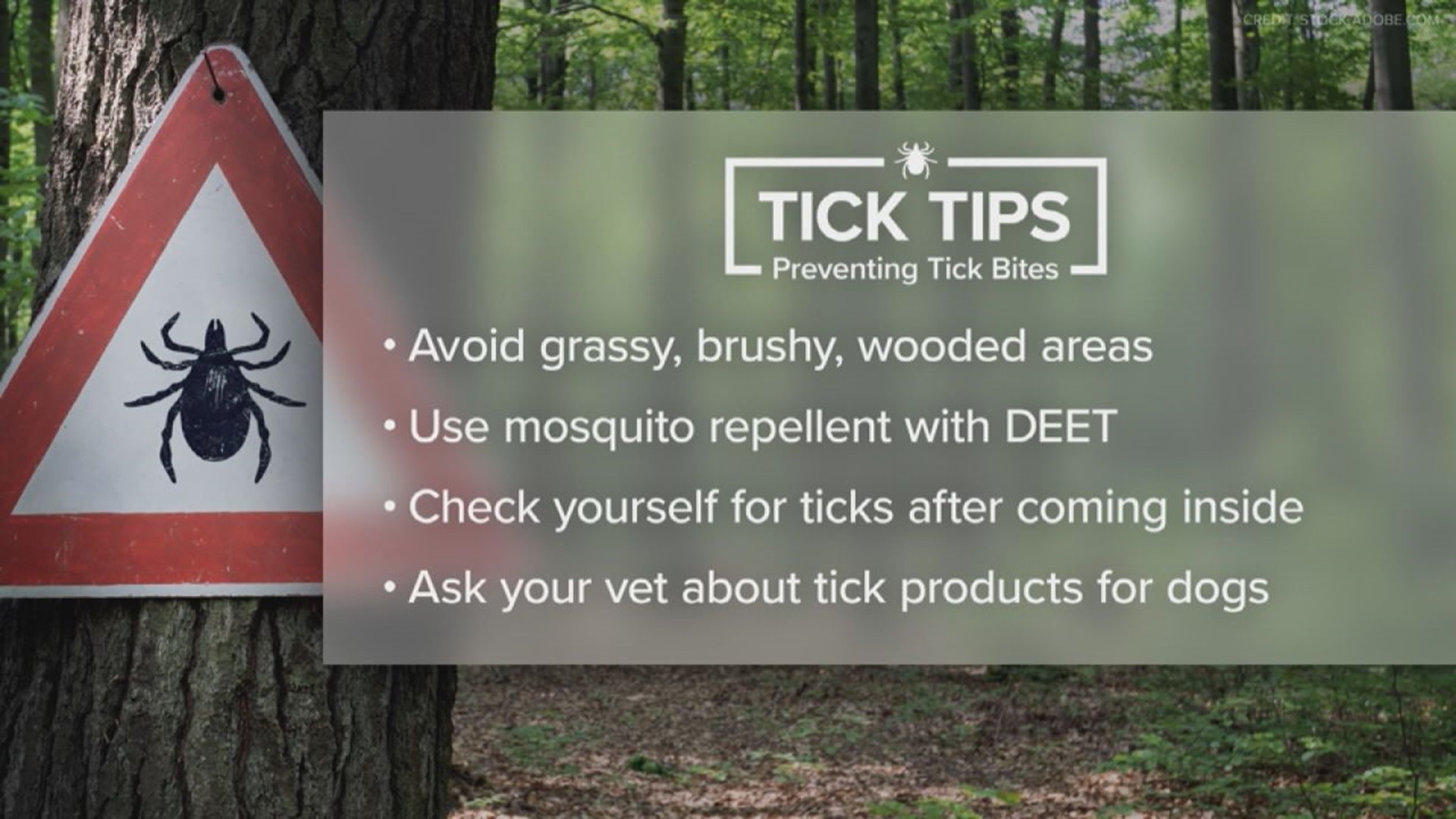YORK, Pa. — The warmer weather we've been seeing means tick season is officially here.
The insects are really here year-round, but the warmer temperatures bring out the tiny parasites in droves. While seeing them may bug you, they can also carry powerful bacteria than can make you very sick.
"Whenever a tick gets attached to us, it gets a blood meal, but it also regurgitates its saliva, and the saliva has parasites which in turn get injected into our system later, causing other medical problems," said Dr. Raghav Tirupathi.
The WellSpan Health infectious disease expert says Pennsylvania is among the top states for Lyme disease.
It's something Carrie Perry of Dauphin County knows all too well.
Both of her daughters got very ill from Lyme and other tickborne infections. Her oldest, Sam, nearly had to drop out of school.
"It was so bad that she ended up needing a handicap placard to be able to drive from where her place was at Penn State to get to her classes; it was crazy," said Perry. "This was an athlete, a girl who was competitive in soccer and track so really debilitated her in a major way physically. Mentally it took a toll as well because it made her very foggy in her head and that was really hard for schoolwork."
Perry felt so passionately about what her family went through, she started Sam’s Spoons Foundation, a nonprofit that provides education and healthcare relief for those affected with Lyme disease.
The experience also taught them to fight for answers.
"It's very tough, and you really have to be your own advocate or that of a loved one that's going through a tough time and just don't take no for an answer," she said. "Our daughter had a negative Lyme test and it wasn't for like six months later until we could really get a good diagnosis and she got much sicker in that time."
Still, Dr. Tirupathi says tests for these illnesses are typically pretty accurate.
"The first test can sometimes be a false negative in the first six weeks of exposure to a tick or tick bite, but after six weeks the test is reasonably good and if it comes back negative it's less likely that the patient does not have Lyme disease," he said.
Flu-like symptoms usually appear about a month after a bite, as well as the telltale bullseye rash. However, it's important to know that up to 30% of people who get Lyme disease never get the rash.
Tips from Pennsylvania Department of Health on staying safe while outdoors:
- Use insect repellent containing low concentrations (10% to 30%) of diethyltoluamide (DEET) on clothing and exposed skin;
- Apply DEET sparingly on exposed skin. Do not apply to the face. Do not use under clothing;
- Do not use DEET on the hands of young children. Avoid applying to areas around the eyes and mouth;
- Do not use DEET over cuts, wounds or irritated skin. Wash treated skin with soap and water after returning indoors, and wash treated clothing;
- Avoid spraying in enclosed areas. Do not use DEET near food;
- Avoid tick-infested areas;
- Wear light colored clothing so ticks can be spotted more easily;
- Tuck pant legs into socks or boots, and shirts into pants;
- Tape the areas where pants and socks meet;
- Wear a hat, long sleeved shirt and long pants for added protection;
- Walk in the center of trails to avoid overhanging brush; and
- Check yourself, family members and pets for ticks after leaving potentially tick infested areas and promptly remove any ticks detected.
What to do if you find a tick:
- If you find a tick attached to your skin, there is no need to panic. There are several tick removal devices on the market, but a plain set of fine-tipped tweezers will remove a tick quite effectively. Prompt and proper tick removal is very important for preventing possible disease transmission.
- Use fine-tipped tweezers and protect your fingers with a tissue, paper towel or latex gloves. Avoid removing ticks with your bare hands.
- Grasp the tick as close to the skin surface as possible and pull upward with steady, even pressure.
- Don’t twist or jerk the tick; this can cause the mouth-parts to break off and remain in the skin. If this happens, remove the mouth-parts with tweezers. If you are unable to remove the mouth easily with clean tweezers, leave it alone and let the skin heal.
- After removing the tick, thoroughly disinfect the bite and your hands with rubbing alcohol, an iodine scrub or soap and water.
- Avoid folklore remedies such as “painting” the tick with nail polish or petroleum jelly or using heat to make the tick detach from the skin. Your goal is to remove the tick as quickly as possible; do not wait for it to detach.

